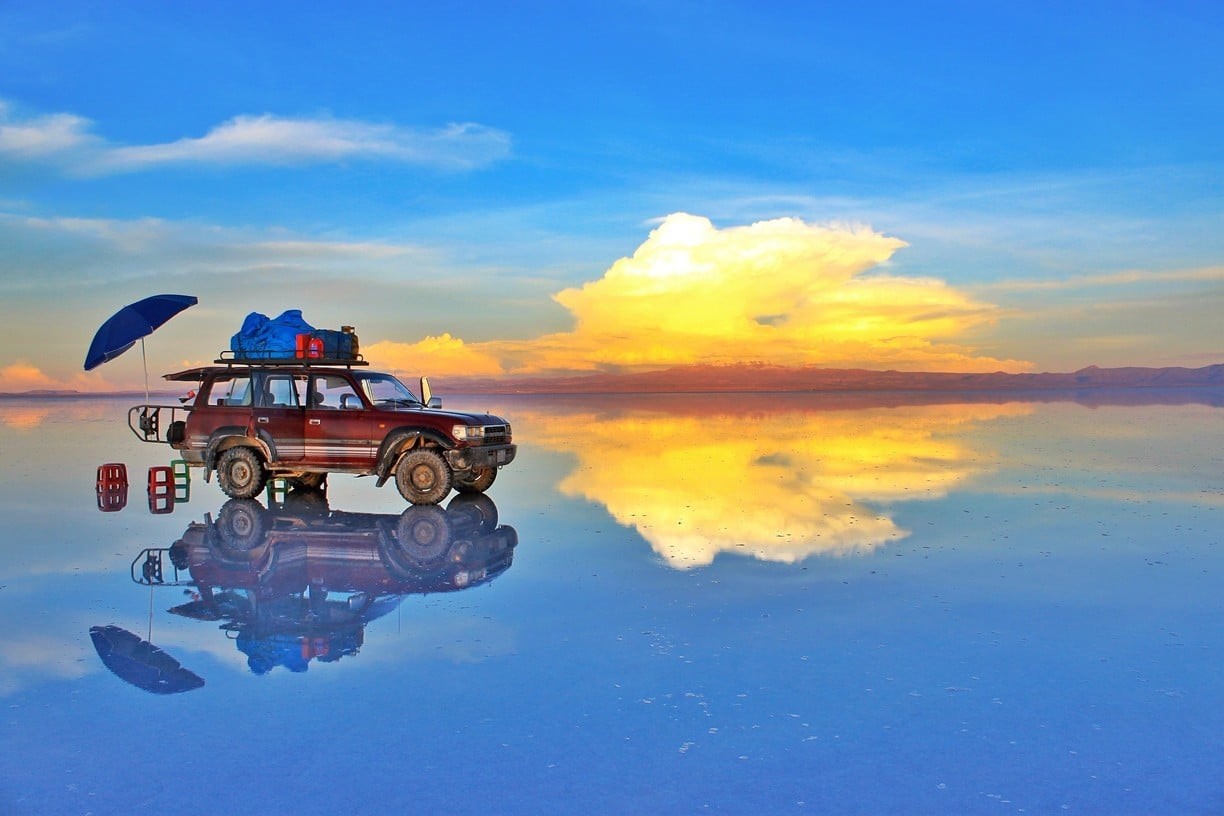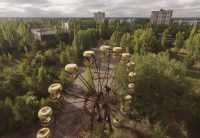The Strangest And Most Beautiful Places Around The World
The world is full of beautiful and strange places, and while most people only hear about the Seven Wonders of the World, there are many other places that deserve to be called wonders. In this list, we will count four of these wonders, which are just a few among many.
01: Lake Hillier, Western Australia

We have always been accustomed to seeing waterbodies appear blue in nature, pictures, and maps. However, nature sometimes likes to surprise us and create strange and unusual things. One such example is Lake Hillier in Western Australia, which is one of the most remarkable and peculiar natural landmarks in Australia. The secret of this lake lies in its pink color, unlike the usual blue lakes we see. It dazzles the viewer with its bright pink waters, which still pose a natural phenomenon that baffles scientists.
This enchanting lake is located on Middle Island, the largest island among the 105 islands that make up the Esperance Recherche Archipelago in Western Australia. Despite its small size, with a length of 600 meters and an area of 150,000 square meters, it gains its unique beauty from its location amid green eucalyptus forests. It is separated from the Pacific Ocean by a thin sandy strip, creating a stunning and captivating natural palette with the contrast between the bright pink, the green of the forests, and the blue of the ocean.
What distinguishes it from other pink lakes around the world?
Although Lake Hillier is not the only lake in the world known for its pink color, what sets it apart is that it maintains its pink hue throughout the year. This makes it different from other pink lakes around the world, which regularly change color due to factors like temperature fluctuations. Despite the fact that the water becomes more transparent as you get closer to the lake, it remains distinctly pink. Even more remarkably, the water retains its pink color even after being removed from the lake and bottled.
Additionally, the lake is naturally very shallow and is surrounded by sand dunes and dense woodlands. Its shore is covered with salt crust deposits, creating an environment that is about ten times saltier than the adjacent ocean water.

What is the secret behind this pink color?
While it was long believed that a type of algae was responsible for the pink color, some recent DNA sequencing research has shown that the lake derives its pink hue from a combination of red and purple halophilic (salt-loving) bacteria and algae. The water’s extreme salinity, comparable to that of the Dead Sea, creates an environment that supports these bacteria.
If you are a lover of unusual natural beauty, you must add Lake Hillier to your list of places to visit.

Socotra Island, Yemen

The Yemeni island of Socotra is located on the maritime passage that connects the Indian Ocean countries to the rest of the world. Its name means “The Land of Happiness” or “The Island of Happiness,” which is fitting given its stunning beaches with pristine white sands, fresh water flowing into the sea from its strangely shaped caves overlooking the ocean, and its year-round greenery and rare birds whose beautiful songs can be heard throughout the island. The island is also distinguished by its rare trees and plants, which have multiple medicinal uses and cannot be found anywhere else in the world. Socotra Island is a sanctuary for unique plant and animal species that exist nowhere else on Earth. The island’s isolation and distinctive climate have contributed to the evolution of many rare and unusual species. From the cucumber tree and bottle tree to the Socotra starling and Socotra cormorant, the island’s biodiversity will astonish both nature lovers and photographers alike.



Dragon’s Blood Trees
One of the most distinctive features of Socotra Island is the Dragon’s Blood Trees, also known as Blood of the Two Brothers. These strange, umbrella-shaped trees with their densely packed branches and shiny red resin have an otherworldly appearance. The resin, often used in traditional medicine and dyes, gives the trees their mysterious name. Witnessing a sunrise or sunset amidst a forest of Dragon’s Blood Trees is an ethereal experience that will stay with you forever.
Many legendary tales have been woven around the Dragon’s Blood Tree. One of the most prominent is that it sprouted from the blood of the two brothers, Abel and Cain, when the first murder in history took place, and the blood from which this tree grew was spilled. Another tale suggests that the tree grew from the congealed blood spilled during a battle to the death between a dragon and an elephant.

In addition to its otherworldly landscapes, Socotra Island boasts stunning white sandy beaches and clear turquoise waters. With a range of pristine bays and hidden coves, the island offers a paradise for swimmers and divers.
Socotra truly lives up to its reputation as a hidden gem with alien-like landscapes. Its isolation, diverse flora and fauna, and breathtaking natural beauty make it a unique destination. Whether you seek adventure, tranquility, or an opportunity to immerse yourself in an otherworldly environment, Socotra Island will captivate your senses and leave you with memories that last a lifetime. Embark on a journey to this hidden gem and discover the magic of Socotra for yourself.
Fly Geyser, Nevada, USA


We probably wouldn’t believe us either, but it’s true. Nevada’s Fly Geyser is an accidental manmade wonder that has created a whimsically colored and fantastically shaped desert marvel that is a must-see for Nevadans and visitors alike. Fly Geyser is a hot spring located on a private cattle ranch in Washoe County, owned by a person named “Fly Ranch” in the Black Rock Desert of Nevada, USA.
Fly Geyser is a unique place that was formed due to human error. In the 1960s, an energy company drilled to extract hot water from an area with volcanic activity. However, the water extracted was not hot enough, and they failed to completely close the hole they had drilled. To this day, water continues to be pumped from the spring, reaching a height of 1.5 meters in the air. This spring consists of several terraces spread over an area of 30 hectares.

Scientists who are familiar with the geyser note that the coloring on the outside of the mounds is the result of thermophilic algae, which flourishes in moist, hot environments. The inside of the mounds even contain quartz, according to Munoz saez, and this quartz is growing much more rapidly than any of the other geysers that she has studied in her career. Typically, quartz doesn’t begin to grow for about 10,000 years within geysers, which makes the Fly Geyser even more of a marvel.
Saltless Lake: Salar de Uyuni – Bolivia

Salar de Uyuni, the largest salt flat in the world, is located in Bolivia. It is one of the most beautiful and unique places, covering an area of 10.5 thousand square kilometers, a massive area larger than some countries. The lake has become an attractive tourist destination, often referred to as the “Mirror of the Sky” due to its glass-like surface that reflects the moonlight and the sunrise and sunset. Additionally, one of the hotels situated in the lake is entirely built from salt, including its furniture.


In the middle of this lake lies the isolated island of “Isla de los Pescado” (Fish Island), known for its giant cacti, which sometimes reach heights of over 10 meters. Salar de Uyuni is situated at an altitude of 3,700 meters above sea level and represents one-third of the world’s lithium reserves. The lake produces approximately 25,000 tons of salt annually, and Bolivia has a stockpile of 10 billion tons of salt, which is unlikely to be depleted.
The formation of this lake is the result of the remnants of the ancient saltwater lake “Lake Poopó,” which dried up 40,000 years ago. About 40,000 years ago, the immense Lake Minchin covered Salar de Uyuni. Rising temperatures and climate change from wet to dry conditions caused the water to evaporate slowly. As this water evaporated, the high salinity levels led to the formation of a thick salt crust, leaving behind the impressive flat salt surface. The water beneath the salt crust continues to evaporate under the sun, leaving more salt on the surface. The evaporation rate is ten times higher than the rainfall.



On a clear day, a thin layer of water covering the flat salt turns into the “world’s largest mirror,” reflecting the sky. This stunning reflection is most likely to appear during the rainy season (December to April). Those fortunate enough to experience this natural wonder will tell you how difficult it is to distinguish where the sky ends and the land begins.













Leave a comment